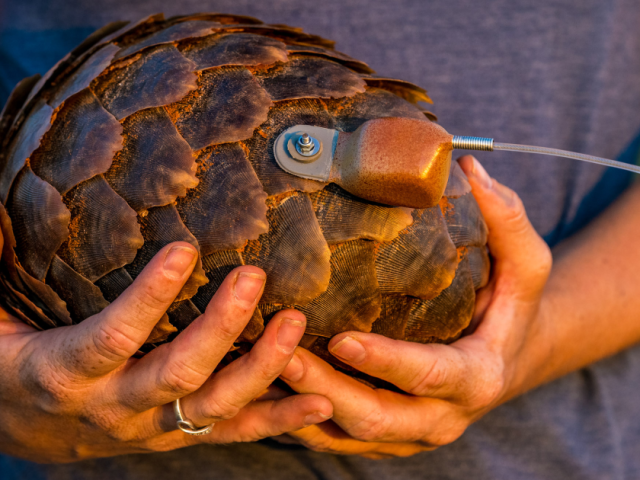Carbon credits trade in carbon emissions or savings and have been proposed as a way of balancing profit with combating climate change. This sounds like a win-win situation. But is it a one-size-fits all solution to global warming? The third in our Tipping Points webinar series tackled the question: “Green gold or green gremlin: Can carbon credits really work for Africa?” Speakers Professor Sally Archibald, Barney Kgope and Dorothy Naitore gave their perspectives on the matter.
Watch the webinar here on the OGRC YouTube channel.
The Africa conundrum
Science is important in tackling climate change, stressed Prof Sally Archibald, and scientists have a role in activism and advocacy, but it is important that they recognise their limitations, and the role of value judgments in deciding how to proceed with facts at hand. Archibald works on understanding the dynamics of savanna ecosystems in the context of global change.
While 39 gigatonnes of CO2 is emitted into the atmosphere every year, the land and the oceans provide an important climate change mitigation service by soaking up 20 gigatonnes of this back into the earth’s carbon systems.
What is Africa’s contribution? The continent produces less than 4% of the total global CO2 emissions but absorbs double the CO2 it releases. Why is Africa taking up carbon, in spite of an increase in agriculture and changes in land use? The regrowth rates of Africa’s natural ecosystems are higher than harvesting rates and land conversions combined.
From these facts, “we can say that Africa is providing a climate service to the globe”, said Archibald. However, the enthusiasm of the global north for this arid land greening in Africa is not shared by African farmers, because in their view this means African ecosystems are threatened by bush encroachment. The facts can be interpreted differently, depending on whether one’s interest is in climate change mitigation or in using the land for sustainable agriculture. It’s also important to note that Africa’s contribution to IPCC targets of -1,5 degrees warming scenarios assume massive increases in tree cover in Africa.
“This leaves us with a conundrum,” said Archibald. The global north wants to manage African ecosystems to store more carbon and provide climate mitigation and carbon offset services (although carbon offsets make no contribution to climate mitigation, as they simply allow fossil fuel emissions somewhere else). The global south, on the other hand, is mixed on the subject, ranging from enthusiasm to rejection.
Often missing from these debates, said Archibald, is a recognition of the trade-offs, in that there is a limit to land that can be used for specific functions, be it agriculture or conservation. Added to this is uncertainty about the prospects of interventions, and there is too little data to rely on. Some research says Africa’s tropical forests are a carbon sink, while others, based on different data sets, claim there are massive carbon losses. So, said Archibald, even though we have stated as fact that Africa is a carbon sink, “there are massive uncertainties around all these numbers, which means that holding onto Africa as a potential to keep us below 1,5 degrees warming is a bit tenuous”.
Finally, the research is often missing an African perspective. Consequently, recommendations for action do not represent African voices. To address this, Archibald is involved in the Future Ecosystems for Africa initiative, which aims to make trade-offs explicit, provide better data to reduce uncertainty, highlight situations where value judgments are marketed as science, and tap into the creativity and knowledge on the continent to devise positive interventions with mitigation co-benefits.
Archibald summarised her arguments by stating that “earning carbon credits in Africa is only a good option when carbon storage is a co-benefit from something we want to achieve anyway because the amount of money on offer is simply too small to sell away the opportunity to manage ecosystems for biodiversity and human wellbeing, and until fossil fuel use declines, we are not helping solve the problem”. African scientists can help by providing better data and getting it heard, insisting on full cost accounting, and identifying when there is a clash of values at play.
Find out more about Future Systems for Africa (FEFA) at https://futureecosystemsafrica.org/
Mitigation and adaptation: working together
Barney Kgope presented the approach taken in South Africa to explore the potential for carbon sequestration in the biodiversity sector. Kgope is the Director for Biodiversity Risk Management at the Department of Forestry, Fisheries and the Environment.
The way in which we manage resources will determine whether benefits from ecosystem services will continue to be derived. To this end there is an array of laws and policies governing the biodiversity and ecosystems sector, including the National Climate Change Response Strategy and the National Climate Change Adaptation Strategy. The purpose of the National Climate Change Response Strategy is to transition South Africa to a lower carbon and climate resilient society through adaptation and mitigation (emissions reduction) measures. These must take place within the country’s transformation objectives and draw on evidence-based science.
Kgope stressed that context is important, and knowledge of local vegetation biomes informs approaches to the problem. Studies were commissioned to establish the extent and condition of the country’s carbon sinks, from which mitigation opportunities can be identified and supporting policy developed. Kgope said all mitigation measures would have to be weighed against economic factors and any other trade-offs. The studies indicated that savanna and grasslands indeed held most of the country’s carbon stocks (60%), while cultivated land represented the third largest contributor. Crucially, the research found that 93% of the carbon is stored in the soil system, so “whatever we do should not just be focused above ground,” said Kgope.
From this understanding, mitigation strategies have been rolled out, including restoration of sub-tropical thicket, forests and woodlands; restoration and management of grasslands; commercial small-grower afforestation and biomass energy, among others. Over 20 years, these steps are expected to reduce CO2 emissions by nearly 276 million tCO2e.
Kgope highlighted the important insights the research produced. First, the terrestrial environment can be both source and sink of carbon and increasing soil carbon helps buffer against climate change and helps reduce global CO2 goals. Second, prevention of land transformation especially from mature vegetation to crop production is a priority in reducing emissions. Third, where new fields have to be established, carbon friendly practices such as low-tillage agriculture need to be adopted. The complexity of the issue suggests that a nexus approach should be followed, in which all measures support each other and that mitigation and adaptation strategies result in long-term sustainability.
Livelihood creation through trees for Africa
The final speaker, Dorothy Naitore, described how the organisation she works for, The International Small Group and Tree Planting Program (TIST), has contributed to global sustainable development goals. Naitore is a leader in TIST Programme, which serves small hold farmers as they plant trees and improve their farms and the climate. She lives in Meru, Kenya.
There are about 131 000 TIST participants planting trees across India, Kenya, Uganda and Tanzania. Of the 60 million trees planted, 23 million have survived on 52930 hectares of small farms. Collectively, this had resulted in nine million tonnes of carbon being sequestered. She said 70% of the carbon profits go to the farmers.
The initiative has resulted in livelihood creation too, through increased agricultural productivity through conservation farming, securing bee habitats, and deriving benefits from trees including fuel wood, cattle fodder, fruit and nuts, timber and medicine.
To the question of whether carbon credits work in Africa, Naitore said her answer is emphatically yes, referencing herself as an example of how she has become a farmer and landowner through her participation with TIST. “I am a testimony to its success. I was a housewife. Now I have bought my own farm and sell my own seedlings to support my family. This program gives women equal opportunities with men. As a woman I am so proud,” she said.
A further benefit of working with so many farmers is that a growing body of knowledge and data is being developed to improve the understanding of Africa’s potential and requirements.
Tipping Points will return on the 19th of May for the series’ fourth episode.
Register now to join the conversation!
- Tracking the Shangani Wanderer - June 18, 2025
- Rescue, rehabilitate, release: tracking the comeback of South Africa’s pangolins - June 18, 2025
- Fewer weavers, fewer homes: why nest builders matter in the Kalahari - June 17, 2025
Additional News
Pangolins are elusive and heavily trafficked. At Tswalu, researchers are working to uncover their secrets and aid conservation.
Declining Sparrow-Weavers may threaten other birds that rely on their old nests for shelter.





